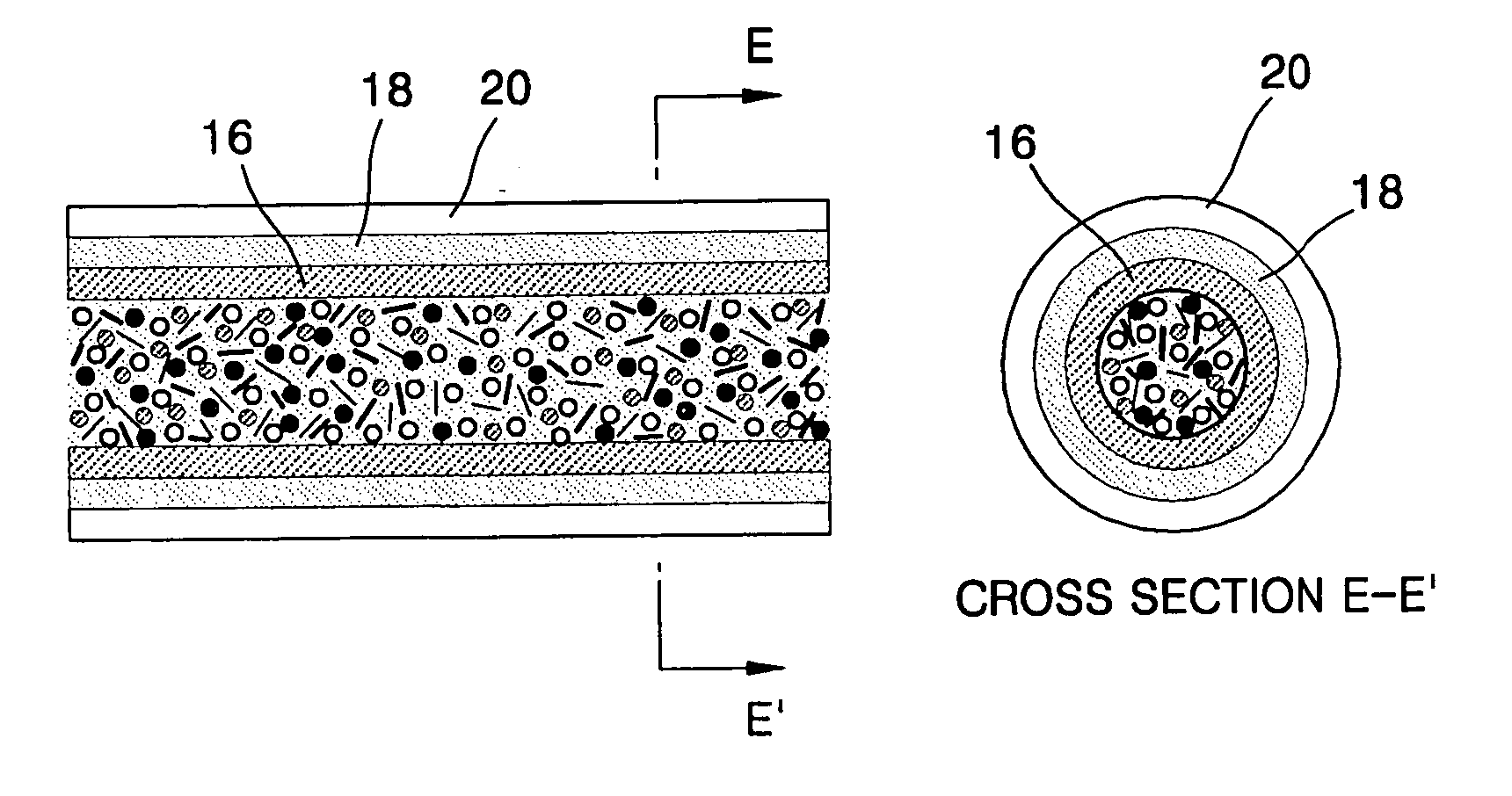Fibril solar cell and method of manufacture
a solar cell and fuselage technology, applied in the field of fuselage solar cells, can solve the problems of low photo-conversion efficiency, high cost of single-crystalline silicon solar cells, and limited use, and achieve high photo-conversion efficiency, low manufacturing cost, and good formability.
- Summary
- Abstract
- Description
- Claims
- Application Information
AI Technical Summary
Benefits of technology
Problems solved by technology
Method used
Image
Examples
example embodiment 1
Production of Fibril Wet Solar Cell
[0067] A. Production of Fiber
[0068] 1 gram of multiple-wall carbon nanotubes (a product commercially available from CarboLex Inc.), 3 grams of tin oxide (a product commercially available from Aldrich Corporation) with a diameter of 10 nm, and 5 grams of ammonium carbonate were mixed with 91 grams of polyvinyl alcohol (containing water in a concentration of 80 wt. %) to prepare a solution for making a fiber. The solution was spun through a wet spinning to produce a fiber with a thickness of 500 um. Then, the fiber was heat-treated at a temperature of 430° C. for 30 minutes.
[0069] B. Impregnation of Photosensitive Dye
[0070] The porous fiber produced in process A was impregnated with a solution consisting of 1 gram of multiple-walled carbon nanotubes (a product commercially available from CarboLex Inc.), 72 grams of porous titanium dioxide (a product commercially available from Nano Co. Ltd.) with a diameter of 10 nm and a surface area of 250 m2 / g...
PUM
| Property | Measurement | Unit |
|---|---|---|
| diameter | aaaaa | aaaaa |
| diameter | aaaaa | aaaaa |
| grain size | aaaaa | aaaaa |
Abstract
Description
Claims
Application Information
 Login to View More
Login to View More - R&D
- Intellectual Property
- Life Sciences
- Materials
- Tech Scout
- Unparalleled Data Quality
- Higher Quality Content
- 60% Fewer Hallucinations
Browse by: Latest US Patents, China's latest patents, Technical Efficacy Thesaurus, Application Domain, Technology Topic, Popular Technical Reports.
© 2025 PatSnap. All rights reserved.Legal|Privacy policy|Modern Slavery Act Transparency Statement|Sitemap|About US| Contact US: help@patsnap.com



